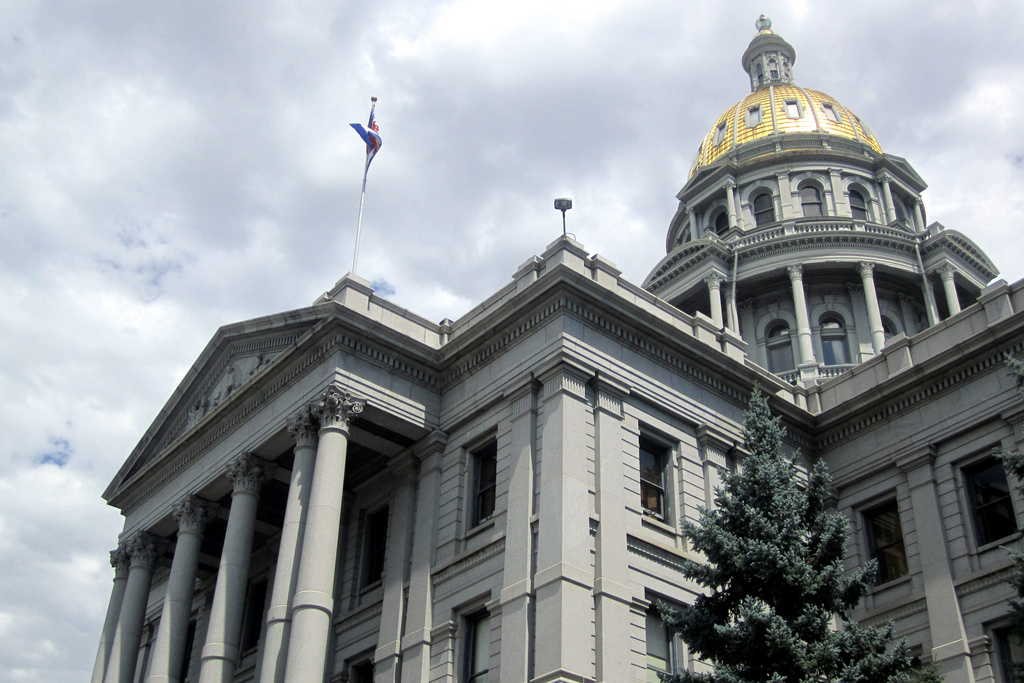The Local newsletter is your free, daily guide to life in Colorado. For locals, by locals.
Although one big story of the 2016 election was how the GOP has run up surprisingly dominant numbers from the White House down to the state level, Colorado remains an outlier to this trend. That’s because a new generation of Centennial State voters shifted party allegiances this year, with Republicans bearing the brunt of the loss.
Four years ago, Colorado had a nearly three-way split between active registered Democrats, Republicans and independents, according to the Colorado Secretary of State. Active voters are those who receive mail ballots and are historically more likely to vote: In 2012, more than 90 percent of active voters in each Colorado county cast ballots in the general election.

At first glance, actual ballots cast in the 2016 election as of November 17 (including military, overseas, and corrected ballots), reveal little change in Colorado’s three-way party divide among active voters (election results will be finalized on December 8). But break down the electorate by age groups, and younger voters have a different story to tell—one that should have Republicans worried about 2020 and beyond.
Among Coloradans between the ages of 18 and 40 who voted in early November, some 40 percent are unaffiliated, one-third are Democrats, and one-quarter are Republicans. The nonpartisan shift was even stronger among young men, with 42 percent identifying as independent.
Although the GOP fared better than many expected in local Colorado races this year, ballot returns show their ranks declining with each new generation. About 45 percent of voters over the age of 70 were registered Republicans. That figure decreases to 25 percent for voters between the ages of 18 and 25. The ranks of independents rose by a nearly identical rate, climbing from 20 percent of voters who are over the age of 70 to 41 percent of voters ages 18 to 25. Meanwhile, Democrats held steady, claiming roughly one-third of voters across all age groups.
Millennials are Colorado’s largest population, and their party allegiances—or lack thereof—are likely to have a significant influence on the state’s political future. Prior to the election, CIRCLE (the Center for Information and Research on Civic Learning and Engagement) named Colorado as one of the top five states where young voters would have an outsized impact, especially since we were one of the few non-coastal states to turn blue for Hillary Clinton.
According to CNN exit polls, Colorado voters aged 18 to 29 preferred Clinton (50 percent) to Donald Trump (36 percent), while 14 percent chose a third party candidate or gave no answer. Interestingly, Clinton won every age group in Colorado but had a smaller advantage over Trump among older voters, who eschewed third party candidates. This falls in line with nationwide results, in which young voters supported Clinton over Trump, 55 to 37 percent, according to a report by Pew Research Center.
Many younger voters came of age during President Barack Obama’s progressive administration and are demographically more diverse, less religious, and better educated than older generations, according to Pew. Nationally, only 13 percent of Republican or Republican-leaning voters are under the age of 30, compared to 21 percent in 1992.
Another worrisome trend for the GOP is that, while young voters are increasingly independent, young women who do align with a major party heavily favor Democrats. ABC’s national exit polls from the 2016 race showed that 63 percent of young women favored Clinton. We see a similar trend in Colorado, where ballot returns revealed that 37 percent of women ages 18 to 40 are registered Democrats, while only 23 percent are registered Republicans.
For now, the young, Democratic-leaning women of Colorado are balanced in the statewide electorate by a greater number of older Republican male voters. But men ages 18 to 40 are split evenly between Democrats and Republicans, giving Democrats an overall edge among younger voters.
While it’s certainly possible that some of the indepedent or left-leaning voters will become more conservative as they age—as the old saying goes, “If you’re not a liberal at 20 you have no heart, if you’re not a conservative at 40 you have no brain”—for now the 2016 voter data paints a bleak picture of the future of the Republican Party in Colorado. With more young voters registering as independents, combined with a strong preference for young women to align with Democrats, the makeup of our state’s electorate could pose a significant risk to Colorado’s conservative base in the coming years.








